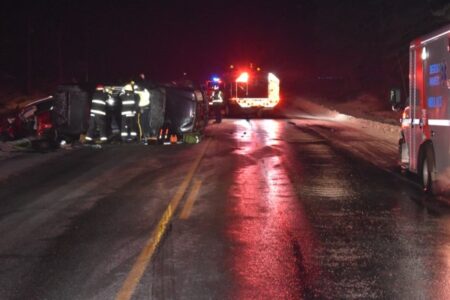RELEASE: BC issues environmental assessment certificate for LNG Export Terminal
Environment Minister Mary Polak and Natural Gas Development Minister Rich Coleman have issued an Environmental Assessment Certificate to LNG Canada Development Inc. for the LNG Canada Export Terminal project, which will be located in northwest British Columbia in the District of Kitimat.
The decision was made after considering a review led by British Columbia’s Environmental Assessment Office. The ministers have issued the certificate with legally enforceable conditions that have given them the confidence to conclude that the project will be constructed, operated and decommissioned in a way that ensures that no significant adverse effects are likely to occur, with the exception of adverse effects from greenhouse gas emissions. A record of the factors that the ministers considered in making their decision can be found in the Reasons for Ministers’ Decision at: http://tinyurl.com/od3phsg
The LNG Canada Export Terminal is the first project to be granted a certificate following a substituted environmental assessment. Substitution means that the Environmental Assessment Office conducts a single process that meets all federal and provincial requirements. The federal minister and provincial ministers make separate decisions on whether to approve the project based on the environmental assessment report prepared by the Environmental Assessment Office.
A substituted environmental assessment reduces duplication and increases efficiencies for everyone involved – the province’s businesses, communities, First Nations and governments alike – while maintaining a rigorous and thorough review. Successive governments in British Columbia have actively pursued a “one project, one assessment” approach to environmental assessments in the province. To date, British Columbia is the only jurisdiction to receive substitution.
There are 24 conditions that are part of the Environmental Assessment Certificate. Design requirements are specified in the Certified Project Description. Each of the conditions and the Certified Project Description are legally-binding requirements that LNG Canada must meet to be in compliance with the certificate.
The certificate conditions were developed following consultation and input from Aboriginal groups, government agencies, communities and the public. Key conditions for the project require LNG Canada to:
* Monitor impacts on air, soil, water, and/or vegetation from air emissions;
* Develop a greenhouse gas emissions management plan;
* Mitigate and monitor impacts to marine mammals during construction and shipping;
* Manage and monitor marine water quality to protect marine life and human health;
* Offset impacts to ecologically important wetlands;
* Develop a socio-economic effects management plan to minimize impacts to community infrastructure and services;
* Develop a traffic management plan to minimize disruptions during construction;
* Develop a marine activities plan that monitors and mitigates impacts to marine users;
* Monitor to verify the assessment of the wake effects from liquefied natural gas (LNG) carriers; and
* Continue consulting with the public and Aboriginal groups throughout all phases of the project.
In addition, LNG Canada proposed a number of significant design changes during the environmental assessment, based on feedback received during the process:
* Reducing greenhouse gas emissions by using power from the BC Hydro grid for the auxiliary power requirements of the facility;
* Reducing the impacts to fish habitat and identifying additional offsetting opportunities;
* Moving the marine shipping route further away from Triple Island and proposing reduced speeds for LNG carriers; and
* Refining the areas proposed for disposal at sea.
Many of the legally binding conditions were informed by consultation with Aboriginal groups, and include requirements for the continued engagement of Aboriginal groups, programs to support Aboriginal employment, contracting opportunities, skills training, and opportunities for Aboriginal groups to participate in monitoring activities. Many conditions also addressed issues of concern raised by Aboriginal groups, including air quality, marine mammals, fish and fish habitat, and wake effects. In addition to the conditions, some of the design aspects of the project addressed key issues raised by Aboriginal groups, including movement of the shipping route further away from Triple Island and a reduction in the proposed disposal at sea locations.
The LNG Canada Export Terminal will require various federal, provincial and local government permits to proceed. The Environmental Assessment Office will co-ordinate compliance management efforts with other government agencies to ensure that the office is satisfied that certificate conditions are met.
The $23 billion-$36 billion LNG Canada Export Terminal project includes a facility with LNG storage, power generation, a marine terminal and LNG shipping by carriers. The project would produce 26 million tonnes of LNG per year at full build-out. The project will employ between 4,500 and 7,500 people during construction and between 450 and 800 people during operations.
British Columbia’s environmental assessments provide for significant opportunities for Aboriginal groups, government agencies and the public to provide input on the potential for environmental, economic, social, heritage and health effects from a proposed project.
























Comments